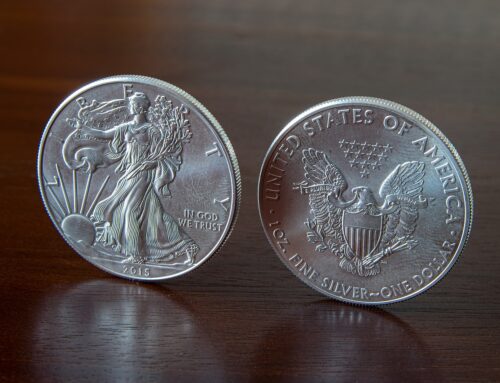One way to think about the design of your investment process is to do so using a variation on the traditional risk/return framework.
- Return. To generate returns that are different to the market portfolio (hopefully better), you need to have a portfolio that is different to the market portfolio.
- Risk. When you hold a portfolio that is different to the market portfolio, you will generate returns that are different to the market portfolio (possibly worse).
As an active fund manager, you need to design a process for identifying investment ideas that are different to consensus opinion, and for implementing those ideas in such a way that your portfolio generates alpha. By definition, alpha opportunities exist in the field of non-consensus ideas, and for those ideas to be harvested as realised alpha, a decent proportion of your calls needs to be right. For some other proportion of the time you will either look wrong or you will actually be wrong. Given that this may be too fine a distinction for your clients and other stakeholders to make, you will need to design a process for surviving when things don’t go your way.
The Wall Street legend, Michael Steinhardt, made non-consensus calls that were right often enough to enable his fund to compound at just shy of 25% a year over a 28 year career. He had this to say on what he called variant perception: “The hardest thing over the years has been having the courage to go against the dominant wisdom of the time, to have a view that is at variance with the present consensus, and to bet on that view…In an immediate, emotional sense, the market is always right. So if you take a variant point of view, you will always be bombarded for some period of time by the conventional wisdom as expressed by the market.”
Alpha and noise arise together. Noise brings about the mispricing of securities that creates the opportunity to capture alpha. And the very act of pursuing alpha will generate noise because your positioning will be dissonant with the consensus. Designing a process to help you capture alpha is an exercise in noise exploitation. Designing a process to help you cope with noise is an exercise in risk management.
It’s going to end badly if you design a process that delivers you non-consensus ideas, but you have no process for managing the noise that will inevitably accompany those ideas. When your P&L contains sufficient red ink your clients will doubt you, your boss and colleagues will doubt you, and even you will doubt you. Doubt is but one manifestation of noise, and when it crosses a certain threshold, it will make you do things that you later regret.
This is not adequately captured by the complex quantitative risk-management tools that you have at your disposal. You will add significant robustness to your process if you make a qualitative assessment of how much noise you can stand. If that seems too abstract, ask yourself this: How much pain can I take before I am forced to fold?
Don’t answer too fast.
- Your Pain. There is ample research to indicate that we are surprisingly poor at predicting our future emotional states, especially with regard to their intensity and duration. A period of underperformance can hurt much more than you expect, and that pain can cause you to capitulate at the worst possible time and bring to a close a promising career.
- Others’ Pain. Even if you have exemplary intestinal fortitude, that might not be enough to keep you in the game. There are other stakeholders in your portfolio who can pull the plug, so their pain threshold matters too. Your survival is also a function of how much pain your clients and other stakeholders can take.
The blow-up of Long-Term Capital Management in 1998 is a good illustration of JM Keynes’ famous quote: “The market can stay irrational longer than you can stay solvent.” It also illustrates the point that you can lose control of your portfolio even if you can take the pain.
The LTCM team was formed in 1993 by John Meriwether and consisted of a group of elite bond traders from Salomon Brothers and a couple of future Nobel Prize winners. They launched their fund in February 1994 with $1 billion under management and over the next four years they delivered stellar performance, turning a $1,000 investment in the fund at inception into $4,000. However, six months after the fund’s peak in April 1998, its NAV fell to $330, with much of that 92% drawdown occuring in six short weeks during August and September of 1998.
The firm’s main strategy was to arbitrage temporary mispricing between related fixed income securities, such as on-the-run and off-the-run 30-year US Treasuries. The fund seemed to be highly diversified with hundreds of positions in different asset classes and different geographic regions, but in reality the portfolio was almost purely a short-volatility convergence bet, albeit expressed in a myriad of different ways.
The pricing discrepancies between the long and short positions were usually very small, and therefore the firm used significant leverage to generate attractive returns. At the end of 1997 the fund was leveraged about 25:1, excluding its derivative exposure. This leverage juiced their returns while the convergence bets were playing out as planned, but because it allowed them to get very big in what turned out to be a crowded trade, their leverage was the source of most of their pain when their trades started to unravel.
The first tremors were felt by the fund in the middle of 1998 as risk aversion started to take hold in a delayed reaction to the 1997 Asian Crisis. The widening of spreads on their convergence trades caused them to lose 6% in May, 10% in June, and another 10% in July. Then in August 1998, Russia caused a major shock to global markets when it unexpectedly defaulted on its local currency domestic bonds. The ensuing flight to quality meant that LTCM’s liquid short positions were bid up while its relatively illiquid long positions experienced heavy selling pressure, precisely the opposite of what was required for the convergence trade. It turned out that many others, including the major banks’ trading desks, had been aping LTCM’s trades, so when the scramble for the exits began, there was very little space for a big player to manoeuvre.
Some of the LTCM partners wanted to raise more capital to add to their positions because they were adamant that spreads were unsustainably wide and they believed that the inevitable spread-tightening represented a rare opportunity for outsize gains. Unfortunately for them, the most likely source of fresh capital for the fund was the very group of banks that were issuing LTCM with margin calls; and these same banks would later be accused by LTCM of picking off their distressed positions. In order to meet the banks’ margin calls amidst an evaporation of liquidity, LTCM was forced to sell what it could at almost any price, which caused the fund’s equity to shrink, which in turn triggered fresh margin calls, and which ultimately put the fund into a death spiral.
It quickly became apparent that the LTCM implosion might have wider consequences. In addition to the on-balance-sheet liabilities now being about 250 times the fund’s dwindling equity, it also had derivative exposure with a face value of over $1 trillion, most of it in the form of interest-rate swaps entered into with almost every bank on Wall Street. If LTCM went under, each bank would face significant losses, which would set off a chain reaction of default that could result in systemic meltdown.
The Federal Reserve stepped in to safeguard the financial system and it orchestrated a $3.6 billion recapitalisation of LTCM with the firm’s major creditor banks. The banks and the Fed had reached a point where they were not prepared to tolerate any more pain, so they pulled the plug; the LTCM partners lost control of their fund even though they were willing to take more pain. The terms of the bailout were that the banks got 90% of the fund in exchange for their capital injection, and the LTCM partners got 10% as a way to retain them to oversee an orderly wind-down of the fund’s many arcane positions. The fund was finally liquidated and dissolved in 2000.
The partners’ share of the fund after the bailout was worth about $400 million, but this was entirely wiped out by the debts that the partners had incurred to leverage their personal investments into their already highly leveraged fund. Although they had an unusual tolerance for pain, they were not able to survive being wrong. They lost control of their fund, they lost vast amounts of money, and they suffered severe damage to their once-impeccable reputations.
Edge can be derived from any number of things, such as depth of analysis, complexity of computation, or speed of execution. These are the things that you might typically associate with edge, but sometimes it’s more subtle than that. It had seemed from the outside that LTCM had some sort of magic sauce for delivering excess returns, but arguably their main competitive advantage was their ability to use their reputations and prestige to get highly preferential financing terms from their banks for their positions. The fact that most of their positions received no haircut from their prime brokers meant that they could simply use more leverage than their competitors. And perhaps the boffins at LTCM themselves failed to properly understand that this was maybe the firm’s real edge, and also how quickly it could disappear.
- How much pain can you take? How do you know?
- How much pain can your key stakeholders take? How do you know?
- How will you integrate this assessment into the design of your investment process?
References
- Justin Newdigate: Noise (2019)
- Wilson & Gilbert: Affective Forecasting (2003)
- Michael Steinhardt: No Bull (2001)
- Roger Lowenstein: When Genius Failed (2001)
- Nicholas Dunbar: Inventing Money (2000)







Leave A Comment